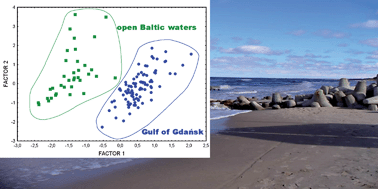The concentrations of Ag, Cd, Co, Cr, Cu, Fe, Ni, Pb, Mn and Zn in Saduria entomon and adjacent bottom sediments from the southern Baltic were determined by FAAS. In order to estimate the strength of correlations between accumulated elements in these crustaceans and surficial sediment, bioaccumulation factors (BAFs) were calculated. The results of factor analysis (FA) and the Kruskal-Wallis analysis of variance (ANOVA) clearly indicate geographical differences between the concentrations of these elements. Cd, Co, Fe, Ni, Pb and Zn levels were higher in S. entomon from the Gulf of Gdańsk, whereas Cr and Mn levels were higher in the crustaceans inhabiting open Baltic waters. The concentrations of Ag and Cu were comparable in both regions. There was a tendency for metal concentrations to distinguish organisms inhabiting the muddy bottom from those living in sandy sediments. The granulometric composition of the sediment appears to influence trace metal bioavailability. The results show that S. entomon could be a valuable sentinel organism for biomonitoring heavy metal contamination in the southern Baltic.

You have access to this article
 Please wait while we load your content...
Something went wrong. Try again?
Please wait while we load your content...
Something went wrong. Try again?


 Please wait while we load your content...
Please wait while we load your content...